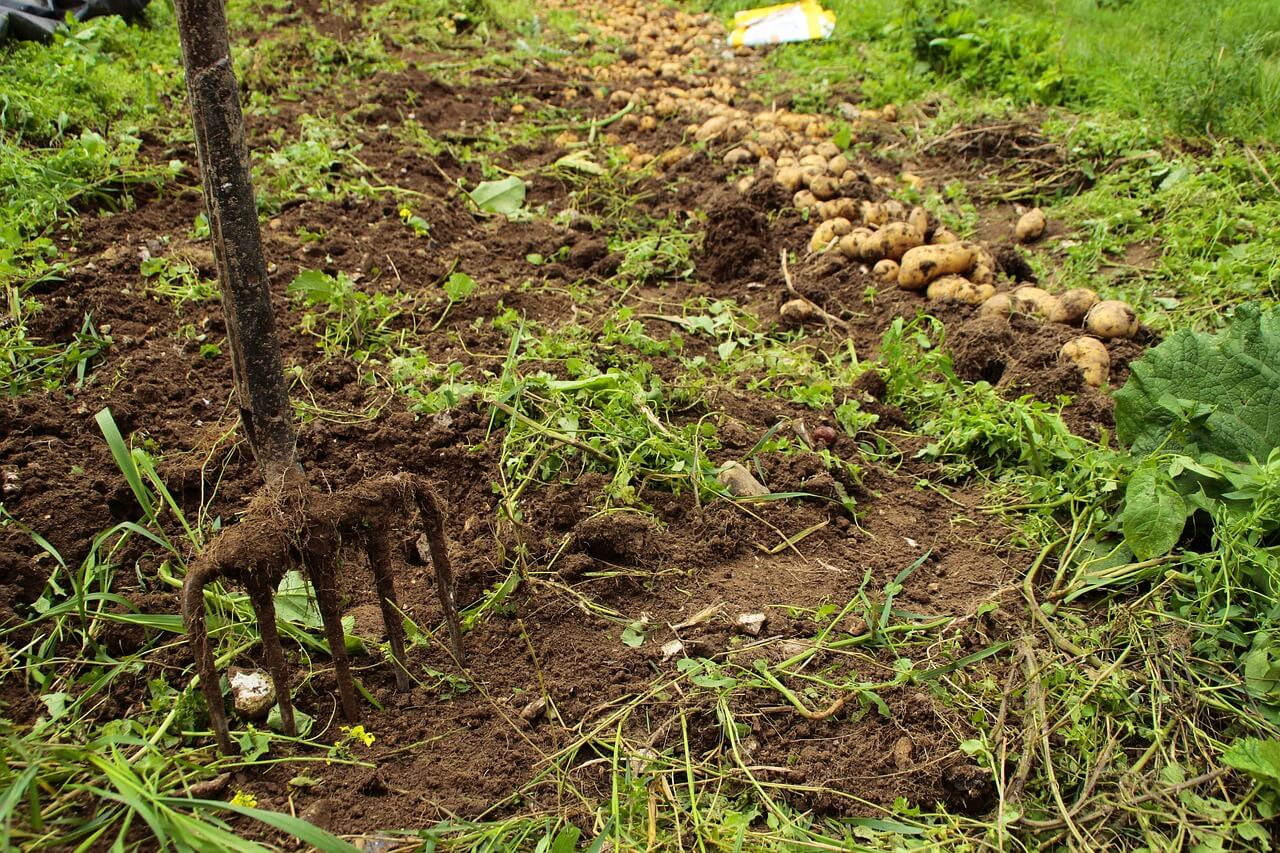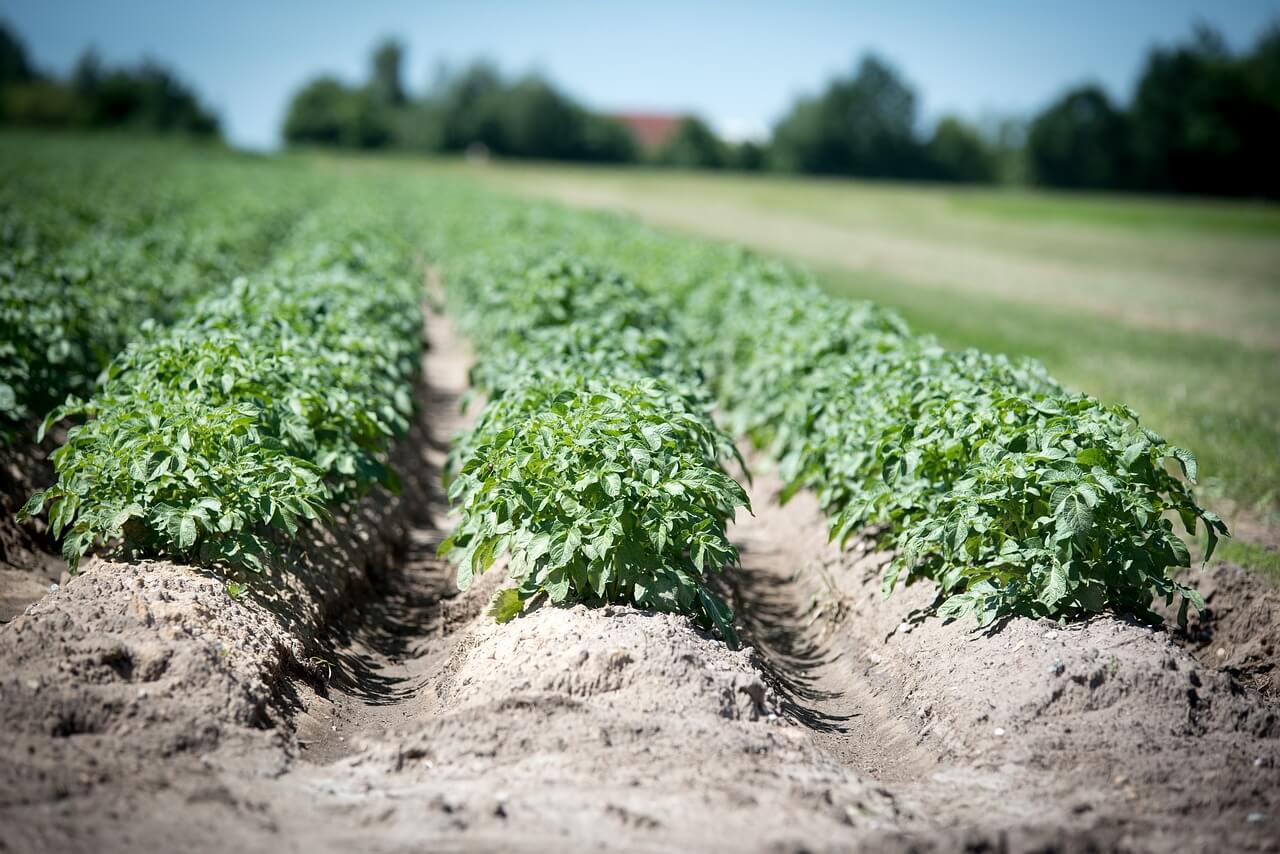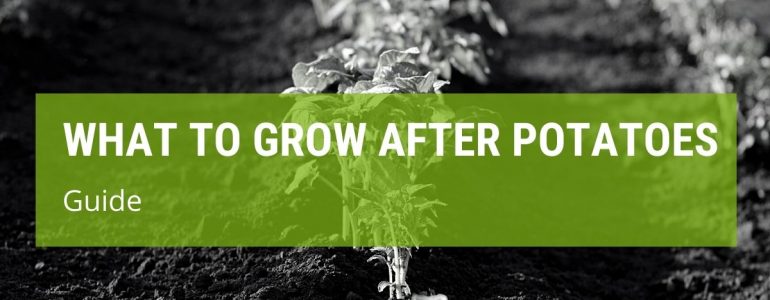Ok, so you’ve grown and harvested your potatoes, and almost certainly they have been amazing. But what do you do afterwards? Luckily, there are many things you can do to replace your crops even after they have all been safely harvested. Let’s look into what to grow after potatoes!
What Is The Best Crop To Plant After Potatoes?

Because potatoes will be all out of the ground before the winter, their emptied beds are a great place to start off winter growing vegetables.
Potatoes take a lot of nutrients from the soil, so they best things to plant after potatoes are things that do not require too much feeding.
Cabbage, kale and leeks are great choices to plant in your leftover potato soil – just remember to start the seedlings off early enough so they are hardy when you plant them out!
Sweetcorn is a good choice for your vacated potato bed too, as these should just be starting well at the time that you pull your new potatoes.
Squash plants, such as pumpkin and butternut squash are also good contenders for your empty potato place.
Planting different plants in your harvested potato beds is a good idea, for many reasons:
- It will prevent any diseases being passed from plant to plant. If your potato suffers blight, for example, you won’t want to plant any more potatoes in that area.
- Different plants require different nutrients. Planting different plants after potatoes, which use different nutrients in the soil, will ensure that they get the goodness they need.
- It makes the most of your available space. It’s no good having a big empty patch in your garden when you could be using that space to grow food!
- Some plants, such as beans, actually replace nutrients into the soil, making it a perfect environment for next year’s spuds.
This is a useful little video, as it will show you some great generalised crop rotation techniques, as well as some scientific information about vegetables in general and what you can plant after potatoes:
What Can You Not Grow Near Potatoes?
Potatoes belong to the Nightshade family, so they use the same nutrients as plants from the same family, and can be susceptible to the same diseases.
The nightshade family includes tomatoes and peppers, so you should avoid planting these too close to your potato patch.
Pests and diseases can also be shared around the same families, so if your tomatoes or peppers are too close to a sick or infested potato, chances are the other plants will be affected too.
Cucumbers and Squash will compete with your potatoes for nutrients, and cucumber can actually make your potatoes more susceptible to blight.
You should avoid planting your Sunflowers too close to your spuds, as they release a certain chemical that can inhibit the growth of potatoes.
You can plant vegetables alongside your spuds, of course, but did you know you can also plant herbs and flowers too?
Some of these, such as Nasturshium and Marigold are good because they can deter pests, even those specific to potatoes.
Nasturshium is known as a “sacrifice plant”, as it will attract pests that will otherwise affect your potatoes!
Chives, Parsley and Thyme are great to plant near your potatoes, as they can impart a delicious flavour to your tubers – plus they are great harvested and cooked together!
Can You Plant Sweet Potatoes After Potatoes?

Sweet potatoes and regular potatoes are actually not related, despite the name! This means that you can plant sweet potatoes after potatoes and not worry about transmitting disease.
The one thing to consider is feeding or mulching your potato patch. Potatoes are heavy feeders, and sweet potatoes also like a good dose of nutrients, so make sure you feed your soil before planting your sweet potatoes.
If you have an early potato harvest, this is a great time to prepare your beds for sweet potatoes, and they tend to planted much later in the season.
Sweet potatoes aren’t quite as heavy on the feeding as your standard potato, but they will like a bit of compost dug into the soil after you have harvested your potato crop.
For a good sweet potato harvest, the soil needs to be very warm, so after your potato harvest you should cover the patch with black plastic, to get the soil really warm.
Can You Reuse Potato Soil?
You can reuse your potato soil, regardless of whether you have grown outdoors or in pots or bags.
- The only thing you need to watch out for is leftover potatoes – even a tiny little forgotten spud will sprout the following year, and you may be surprised to see it among your new crop!
- Potatoes send down long roots, to make the most of the nutrients in the soil, so you will have to sift through the soil to get the roots out.
- It should also be borne in mind that you should plant different plants in your spent potato soil, not potatoes.
- This is because potatoes are heavy feeders, and will use a lot of the available nutrients in the soil. If you reuse the soil you will need to plant things that use less nutrients.
- If your potatoes have had any form of disease – especially blight – then you should NOT reuse the soil, especially for things in the potato family. This can spread the disease from plant to plant.
- Potato soil is fine to use for most crops – especially those that do no require as many nutrients as potatoes – as long as you make sure that you remove all the roots and tubers, and get rid of as many weeds as you can.
Final Words
Growing potatoes is very easy and will reward you with delicious food (and other things), and, very helpfully, they can pave the way for a whole new round of vegetable crops once the potatoes have been lifted.





